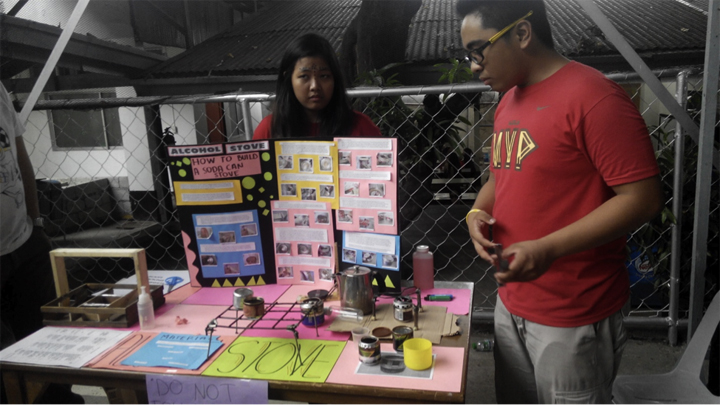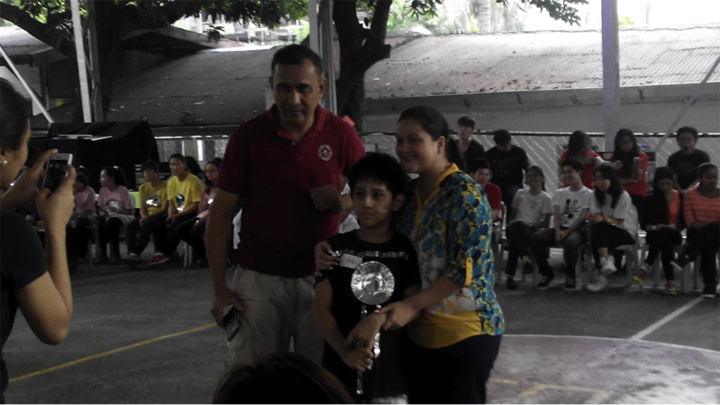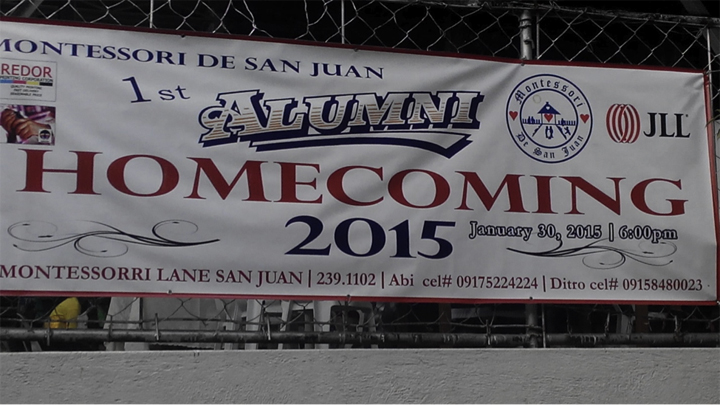The age of educational institutions that enforce strict rules, a steady stream of tiring homework, and rote memorization is coming to an end. Nowadays, people want to enroll their children in progressive schools that do away with the rigid structure of traditional standardized education. Many institutions are breaking free from this worn-out model, creating learning sessions, doing away with homework, and letting children have more control over their own education.
But this alternative education system is not a new development. In fact, at least one education system in the Philippines has been ahead of its time for forty years, with the rest of the country slowly catching up. This is the Montessori school system. Montessori de San Juan (MSJ) celebrates 2015 as its 40th year in the country.

In celebration, Montessori de San Juan kicked off the year with a Math and Science fair. The kids made a grand showing of their Montessori-wrought creativity and innovation, with projects like a solar-powered oven, a light bulb that switches on when its cord is dipped into a glass of water, a cleaning spray made from vinegar, and other promising inventions. These projects, inventive accomplishments for such young children, are proof that the Montessori way works.
Back in 1975, Pomona Arellano established MSJ to honor her late husband Oscar, who had been credited for bringing the Montessori method to the Philippines. The Montessori teaching method was conceived by Maria Montessori, an Italian physician and educator in the late 1800s. She believed that children had an inherent desire to learn, and would in fact seek out knowledge for themselves, given the opportunities. Over time and long days of research, Montessori refined and created an educational method that placed a premium on a child’s independence, bestowed freedom within limits, and nourished a healthy respect for the child’s psychological, social, and intellectual development.
There are many school systems that have adopted the Montessori method, which traditionally includes a mixed age classroom, uninterrupted blocks of work time, specialized educational materials developed by Montessori and her colleagues, and most importantly, independence.

A child learning in the Montessori method is given a choice of activity from within a prescribed range of options, and learns from a “discovery” model, where he or she learns concepts from working with materials rather than by textbook spoon-feeding. Although children are given freedom of movement within the classroom, a Montessori teacher trained by the American or European Montessori Society must supervise this process.
“Any educator worth her salt understands that children all have their own strengths and different speeds of learning,” Assistant Principal Sandy Arellano, granddaughter to the school founder, said. “We at Montessori San Juan are committed to exposing the students to a learning environment that will assist them in adapting and adjusting to a diverse and ever changing society.”
Back when Pomona Arellano set up the school, the country was not yet ready for a purely textbook-free education. Accordingly, Montessori San Juan uses a progressive version of the Montessori Method. MSJ teaches their children through worksheets, modules, and hands-on activity related to the subject matter, adding more homework mixed with modules as the kids grow older. This is designed to complement and enhance the normal progression of a child’s psychological and intellectual development. A child grows according to their inner psychological directives and at their own pace, within the prepared Montessori environment.
“There are different kinds of learners,” Arellano explained. “We have the visual, tactile, and auditory. Regular classrooms have many students, but it’s easier to spot what kind of learner a student is when you only have a few students.” Each class is populated with 12-15 students per class, with only one section per level.
This small population works to the students’ advantage. In addition to the natural camaraderie fostered by a small school, everyone also gets the chance to excel, to express themselves, and to get a hands-on experience of the special experiential learning that MSJ offers. “It’s important that our kids understand the practical applications of what we teach them,” Arellano said.
Neither is the school exclusionary—there are a handful of differently-abled children among MSJ’s student body. The school works closely with their therapists and doctors to ensure that they receive the best possible care and education. To better equip their differently-abled students, MSJ is also opening a special SPED class to address their more pressing needs, such as practical applied academics, community living, and life skills. In other areas, these children usually are integrated with the regular classes, rather than segregated to a Special Education curriculum. This arrangement also provides the regular students a chance to learn how to get along with children with special needs.

Indeed, the camaraderie of this close-knit school is almost palpable. In MSJ, there truly is unity in diversity, which is celebrated as strength. During the 40th anniversary, each of these children combined their different talents and competencies to make the festivities as fun—and informative—as possible.
As the fair winds down to a close and the student performers take their final bows, there are smiling faces everywhere, shining with sweat, pride, and happiness. Unconventional as it may be, it’s clear that the Montessori way works.
Montessori de San Juan is located at #3 Montessori Lane St., San Juan. To find out more about their education system, call 239-1102/725-6306, or visit their Facebook page.

